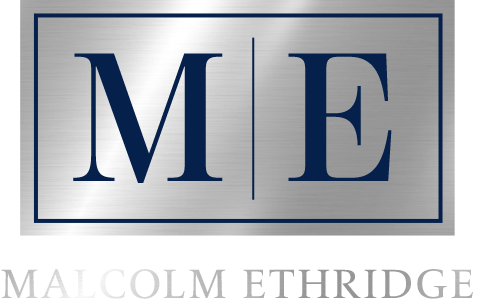The Importance of Tax Diversity Among Your Investment Accounts
When it comes to retirement, savvy savers know that diversification is key, not in the assets they choose but also regarding the types of accounts they use. By strategically allocating retirement savings across traditional IRAs, Roth IRAs, and taxable brokerage accounts, pre-retirees can optimize their tax situation prior to and during retirement.
Tax diversity simply refers to the practice of spreading investments across different account types that each have distinct tax implications for contributions, growth, and withdrawals. And the significance of such a strategy in one's investment portfolio cannot be overstated.
To subscribe to the MalcolmOnMoney newsletter and receive more content like this, click here.
With investments spread across accounts that have different tax characteristics, you gain the flexibility to choose which account to withdraw from based on your current tax situation. Not only does this help manage your tax bracket in retirement, but it also gives you control over whether and when your savings will be taxed.
Tax rates are subject to change. Thus, diversifying the tax treatment of your accounts can protect you against the risk of future tax rate increases. For instance, if tax rates were to rise just as you were set to retire, having access to tax-free income from accounts like Roth IRAs in the years before you were required to take minimum distributions might prove beneficial.
Even if tax rates were to remain unchanged forever, it is difficult to know which tax bracket you will ultimately fall in in the future. There are several variables that can affect your future taxable income and tax bracket. This includes fixed or guaranteed income from Social Security or a pension, the sale of assets, receiving an inheritance, or any other unforeseen financial windfalls.
This uncertainty underscores the importance of tax diversity in your investment strategy, allowing you to adapt to different financial scenarios and optimize your tax situation regardless of how these variables play out. By diversifying your contributions to workplace retirement plans and individual retirement accounts, you will create a financial buffer that can help manage these uncertainties.
Contributions to traditional IRAs may be tax-deductible, but withdrawals during retirement are taxed as ordinary income. Contributions to a Roth IRA, however, are made with after-tax dollars. This means the money grows tax-free, and withdrawals in retirement are also tax-free. In either case, if you plan to retire earlier than the age of 59½, you might also be required to pay an early withdrawal penalty of 10% for accessing those funds early.
Unlike traditional and Roth IRAs, brokerage accounts do not offer much in the way of tax advantages for contributions or withdrawals. However, they do not have the same withdrawal restrictions as IRAs, making them useful for anyone who might be considering early retirement. Investments held within brokerage accounts are subject to taxes, but as long as you hold them for more than a year before selling, you can benefit from lower long-term capital gains tax rates—which in some cases can even be 0%.
By carefully planning the sequence of your withdrawals in retirement, you can help minimize your tax liability. This may involve withdrawing funds from your traditional IRA up to a certain amount to stay within your current tax bracket and then drawing from your Roth IRA or brokerage account throughout the remainder of the year to avoid higher taxes.
For those planning to retire before the age of 59½, tax diversity takes on additional significance. Strategizing withdrawals to minimize penalties and taxes is crucial. Early retirement also requires careful planning to ensure that assets last longer than the traditional retirement period.
Given their flexibility for early withdrawals, contributing to Roth accounts can be particularly advantageous for individuals planning for early retirement. Contributions to—but not earnings from—Roth IRAs can be withdrawn both tax- and penalty-free at any time. Additionally, there are strategies such as the Rule of 55 for 401(k) plans or the Substantially Equal Periodic Payments (SEPP) that can be used to access funds in traditional IRAs without penalties.
By planning which accounts to draw down first, you can potentially extend the lifespan of your retirement savings; perhaps you have saved more than you will likely need to fund your entire retirement. Drawing from a traditional IRA or 401(k) account first gives your Roth accounts more time to compound and grow, ultimately allowing your heirs to inherit those funds tax-free.
If you have predominantly invested in one type of account, consider opening and contributing to others to balance your tax exposure. For example, if most of your investments are in tax-deferred accounts, consider contributing to a Roth IRA or increasing your investments in brokerage accounts going forward.
Recognizing that each account type offers distinct tax advantages that can significantly impact long-term wealth accumulation and retirement income, it is crucial to carefully evaluate each option and select the accounts that best align with your individual timeline and investment strategy.
*********************************************
Malcolm Ethridge, CFP® is the Managing Partner of Capital Area Planning Group based in Washington, DC. He is also the Managing Partner of Capital Area Tax Consultants.
Malcolm’s areas of expertise include retirement planning, investment portfolio development, tax planning, insurance, equity compensation and other executive benefits.
Disclosures:
The information provided is for educational and informational purposes only, does not constitute investment advice, and should not be relied upon as such. Be sure to consult with your legal advisors before taking any action that could have tax and legal consequences.
Investments in securities and insurance products are:
NOT FDIC-INSURED | NOT BANK-GUARANTEED | MAY LOSE VALUE
